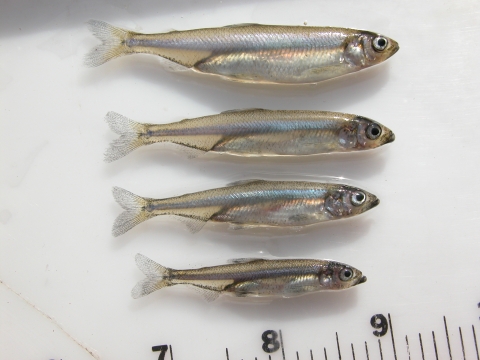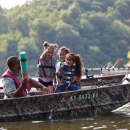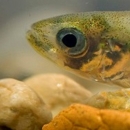Delta Smelt Statistical Models
Statisticians and biologists in the Bay-Delta and Lodi fish and wildlife offices have created a Delta Smelt Life-Cycle Model and a Delta Smelt Individual-Based Model to assess and predict the effects of water resource-management actions on the Delta smelt population. The team worked for years to create the models, which help scientists follow trends in fish abundance, reproduction and mortality.
Delta Smelt Life-Cycle Model
In coordination with state agencies and regional partners, the Delta Smelt Life-Cycle Model was developed to assess past and future population status and predict the outcome of management actions to recover the species. The model was fit to data collected from multiple long-term fish surveys in the upper San Francisco Estuary. It models reproduction and survival of Delta smelt as a function of ecosystem conditions since the 1990s. The model currently supports discussions to develop annual take limits, entrainment management strategies and supplementation strategies.
Delta Smelt Individual-Based Model
While the Life-Cycle Model is a statistically fit model, the Delta Smelt Individual-Based Model is a simulation model of Delta smelt processes of growth, survival, movement and reproduction. Models of each process are informed by Delta smelt laboratory studies, and processes are driven by ecosystem conditions measured in 12 regions spanning the Delta smelt range. The Individual-Based Model is currently in use to support the Collaborative Adaptive Management Team’s Structured Decision-Making Model, which evaluates management strategies proposed for Delta smelt.
For more information, email lara_mitchell@fws.gov.





